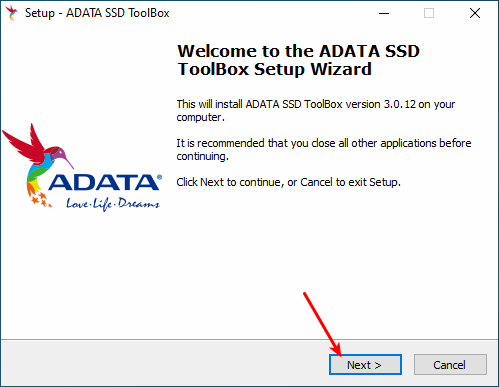


The SSD manufacturer's management app is the first place to check for a secure erase tool.
How to use adata ssd toolbox software#
While it's impossible for MakeUseOf to check the software of every manufacturer, you can find a list of tools for the major SSD manufacturers below.
How to use adata ssd toolbox update#
The software usually includes a firmware update tool, and secure erase tool, and perhaps a drive cloning option. Most manufacturers supply software to use with their SSD. Secure Erase Your SSD Using a Manufacturer Tool So yes, it does cause a small amount of wear, but it is negligible compared to a traditional secure wipe tool. Using the ATA Secure Erase command does use a whole program-erase cycle for your SSD. The process resets every available block of space in a single operation, and the SSD is "clean." Instead, the command causes the SSD to apply a voltage spike to all available flash memory blocks in unison. Importantly, the ATA Secure Erase command does not write anything to the SSD, unlike a traditional secure wipe tool. The command resets all available blocks to the "erase" state (which is also the state the TRIM command uses for file deletion and block recycling purposes). The "ATA Secure Erase" command instructs the drive to flush all stored electrons, a process that forces the drive to "forget" all stored data. In basic terms, when you delete a file in your operating system, the TRIM command wipes the space and makes it available for use.

The TRIM command marks the blocks of data the SSD is no longer using, ready for wiping internally. Solid-state drives use a specific command to keep on top of file deletion, known as TRIM. At least, not how they work on a magnetic hard drive. What that does mean, however, is that some common secure file deletion methods don't work as you would expect. Your SSD constantly moves data around to comply with wear leveling, ensuring all blocks wear at an even rate. Basically, your computer has no way of telling "where" that information was just copied to. In other words, SSDs do not use any physically indexable locations, and software cannot specifically target sectors on the disk. Changes made for wear leveling record to a separate file map. While the SSD uses a file system to communicate data storage locations to the host system, it also re-shuffles the data to ensure even wear across all memory blocks. Each write process causes the memory to degrade or "wear." Instead of writing to a location on a physical disc, an SSD writes the data to a block.


 0 kommentar(er)
0 kommentar(er)
